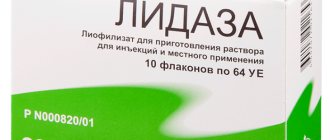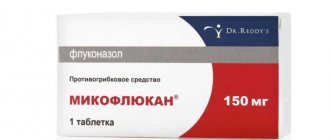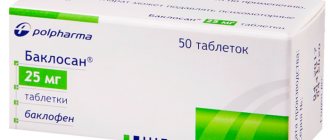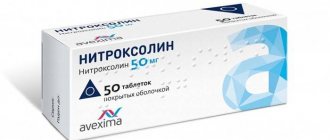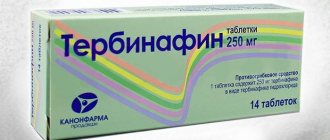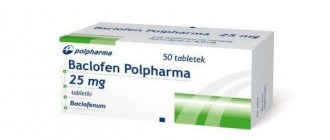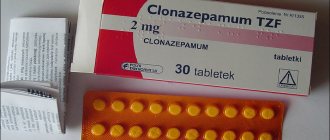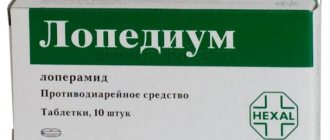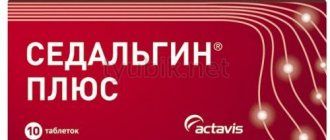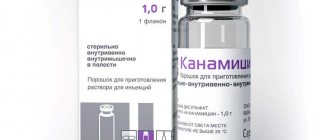1398
Author of the article
Evgeniy Nikolaevich Konoplev
Reading time: 8 minutes
AA
Erythromycin is the first macrolide antibiotic. The medicine was first obtained by scientists from the American pharmaceutical organization Eli Lilly and Company in 1952. Today, the production of the drug is carried out by European companies and firms from the CIS. The average cost of a Russian antibiotic is 68 rubles. Erythromycin analogues manufactured outside the Russian Federation cost from 300 rubles.
Forms of release of the drug and its composition
The drug Erythromycin is available in different forms, which differ not only in appearance, but also in composition and specific effects. In each specific case, the most suitable type of medicine is selected. There are 4 main forms:
- Pills. Round, white, biconvex, with an enteric coating. Packed in contour cells and cardboard packaging. One tablet contains 100 mg of the active substance erythromycin.
- External ointment against acne. Sold in aluminum or laminate tubes of 10 and 15 grams.
- Eye ointment. It is used only for therapy for diseases of the visual organs. Available in 10 gram tubes.
- Lyophilisate. Rarely used. This form is intended exclusively for intravenous administration of the drug.
Erythromycin is most often found in tablet form. It has never been in short supply. Modern pharmaceutical companies, as an alternative, began to produce Erythromycin capsules. Due to their rapid dissolution, capsules begin to act much faster than tablets.
In each of the varieties of the drug, the key active ingredient is erythromycin. Its highest content is found in tablets and capsules. Excipients in this form include calcium stearate, povidone, crospovidone, potato starch, and talc. White paraffin, lanolin, sodium metabisulfite are contained in ointments. And the lyophilisate is prepared on the basis of erythromycin phosphate.
Composition and properties of the drug
Erythromycin is available in 3 dosage forms: tablets, powder for solution (lyophilisate), ointment. They differ in the content of the active substance, erythromycin phosphate, and the presence of auxiliary components.
The tablets are biconvex, white, round. The concentration of the active component can range from 100 mg per 1 tablet to 500. The drug contains povidone and other elements that improve the absorption of the drug and facilitate its elimination:
- talc;
- cellacephate;
- Castor oil;
- calcium stearate;
- titanium dioxide;
- potato starch.
Lyophilisate Erythromycin is a white porous powder. One bottle may contain from 100−200 mg of active substance. The concentration of the active element in the ointment is 10 thousand units per 1 g. The composition of the ointment (except for the eye) also includes additional components:
- Petrolatum. It forms a protective barrier and retains moisture.
- Lanolin. Softens the skin, promotes rapid healing of wounds and microcracks.
- Sodium derivatives.
Erythromycin reaches its maximum concentration 3 hours after administration. Eating food does not affect the absorption of the drug. When ingested, the product has the following effects:
- Bacteriostatic. Inhibits the growth of bacteria and prevents their reproduction.
- Antimicrobial. Suppresses the growth of pathogenic microorganisms.
- Bactericidal (at high dosages of Erythromycin). Causes the death of microorganisms harmful to human health.
The mechanism of action of the drug is that the active component binds to the ribosomes of pathogenic microorganisms, suppressing protein synthesis in them and disrupting the formation of peptide bonds between amino acids. In the described way, the product blocks the production of microorganism proteins.
When prescribing a medicine, the doctor writes a prescription for Erythromycin in Latin: “Rp: Tab. Erythromycini 0.25. D.t. d: No. 10 in tab. S orally, 2 tablets 4 times a day" or "Rp: Erythromycini phosphatis 0.1. D. td No. 60 S. intravenously slowly, 0.6 3 times a day, diluted in 100 ml of isotonic sodium chloride solution.”
Erythromycin is metabolized in the liver and excreted in urine and bile. The active substance accumulates in the spleen, kidneys, and liver. The bioavailability of the drug is from 48%.
The principle of action of Erythromycin
Structure and functions of ribosomes
Like most other antibiotics from the macrolide group, the action of Erythromycin is due to the binding of the active substance to the ribosomal subunit. Thus, the synthesis of proteins of pathogenic microorganisms becomes impossible, and the bonds between amino acid molecules are destabilized. The drug is effective against a large number of gram-negative and gram-positive bacteria.
There are varieties of microorganisms that are resistant to antibiotics. For this reason, doctors recommend pre-testing for sensitivity to antibacterial agents.
This way it is possible to determine how effective treatment with one or another remedy will be. Otherwise, the use of one course of antibiotic and then another may lead to the development of pronounced side effects. High doses of Erythromycin have a bactericidal effect.
What side effects may occur?
After taking the drug, the active substance is distributed unevenly throughout the body. The largest amount accumulates in the kidneys, spleen and liver. In urine and bile the concentration is several times higher than in plasma. Erythromycin accumulates in the milk of women who breastfeed and enters the fetal blood through the placenta if the woman is pregnant.
Analogues and prices
The RLS (medicine register) indicates that the active substance Erythromycin is contained in other drugs. German syrup Grunamycin syrup is intended for children with tonsillitis, sinusitis, conjunctivitis, pneumonia and the above infectious diseases. The most famous Russian analogues of Erythromycin are presented in the table.
| Drug name | Dosage forms | Average price (RUB) |
| Erythromycin-AKOS | eye ointment | 36 |
| Erythromycin-LekT | pills | 67 |
| Erythromycin phosphate | lyophilisate in ampoules | 17 |
| Azithromycin | powder for preparing suspension | 45 |
Medicines from foreign manufacturers have a similar pharmacological effect. Their composition is represented by other active ingredients.
| Drug name | Manufacturer | Active substance | Dosage form | How much does it cost (RUB) |
| Sumamed | Croatia | azithromycin dihydrate | powder, tablets | 375 |
| Vilprafen | Germany | josamycin | pills | 526 |
| Dalatsin | France | clindamycin | suppositories (candles) | 600 |
The listed drugs differ in the list of auxiliary components in their composition. For this reason, the effect of the medicine may be better or worse. When choosing a suitable remedy, it is necessary to focus not only on the patient’s health condition, but also on whether he has an allergic reaction to any of the elements of the medicine. Information about contraindications for use is indicated in the instructions for the medicine.
Indications for use
Microflora sensitive to the drug Erythromycin can provoke the following bacterial infections:
- infectious diseases of the upper respiratory tract - pneumonia, bronchitis, tracheitis;
- infections of the ENT organs - sinusitis, otitis media, tonsillitis;
- cholecystitis and other biliary tract infections;
- diseases of soft tissues and skin - trophic ulcers, burns, bedsores, pustular diseases, infected wounds, acne, etc.;
- infectious damage to the mucous membrane of the eye;
- diphtheria, whooping cough, scarlet fever;
- brucellosis, listeriosis, dysentery;
- primary type syphilis.
Erythromycin is often prescribed in case of ineffectiveness of tetracycline drugs. Individual intolerance to another suitable antibiotic is possible. Erythromycin tablets can be used not only for therapeutic but also for prophylactic purposes.
If you suspect the development of infectious complications after diagnosis or a treatment procedure, taking the drug will be more than justified.
A separate advantage is the possibility of using the product during pregnancy and newborn children. Indications include genitourinary infections in expectant mothers, as well as conjunctivitis, pneumonia and other diseases caused by pathogenic bacteria in children of different ages.
Indications
The ointment is recommended for use to eliminate juvenile acne and treat eye diseases of infectious and inflammatory origin. The spectrum of action of the drug includes gram-positive and gram-negative pathogenic bacteria. The medicine is prescribed for the treatment of diseases caused by microorganisms sensitive to erythromycin phosphate and resistant to penicillin, chloramphenicol, tetracyclines and streptomycin:
- diphtheria;
- trachoma, brucellosis;
- whooping cough;
- legionellosis;
- gonorrhea;
- amoebic dysentery;
- erythrasma;
- listeriosis;
- scarlet fever;
- conjunctivitis;
- genitourinary infections;
- tonsillitis;
- sinusitis;
- bronchitis, tracheitis;
- pneumonia;
- bedsores;
- trophic ulcers;
- burns.
The instructions for use of Erythromycin indicate a single dose for adults of 250−500 mg, but not more than 2 g per day. For a child, the amount of the drug depends on weight. For newborns up to 4 months, the dosage is calculated in the ratio of 20-40 mg per 1 kg, for older babies - 30-50 mg per 1 kg. At least 6 hours should pass between doses of the medicine. The exact dosage depends on the disease. Therapy with tablets lasts up to 3 weeks.
Dosage regimen
The interval between doses of the drug should be at least 6 hours
Erythromycin in tablet form is characterized by high absorption, therefore food intake does not have a direct effect on the effect of the drug. The maximum concentration is reached 2-4 hours after taking the medicine. The daily dose for an adult and a child over 14 years of age should not exceed 2 grams. The maximum single dose is 500 mg. The interval between doses is at least 6 hours.
Depending on the type of infectious lesion, the severity of the disease, the age of the patient, different dosages and different durations of the therapeutic course are recommended:
- for gonorrhea, the first 3 days are recommended to take 500 mg of Erythromycin four times, from days 4 to 10 the single dose is reduced to 250;
- for whooping cough, an individual dosage is calculated at the rate of 50 mg per kg of body weight per day, the duration of treatment is from 5 to 14 days, at the discretion of the doctor;
- Erythromycin for pneumonia in children is also calculated based on the child’s weight, the course is strictly 21 days, in adults - 500 mg every 6 hours, for at least three weeks;
- for pharyngitis and tonsillitis, the course of treatment lasts up to 10 days, and the daily dose of the drug is calculated according to the following scheme: 30-50 mg/kg in adults and 20-30 mg/kg in children;
- for skin diseases, ointment for external use is applied in a thin layer to the affected areas 2-3 times a day;
- for prophylactic purposes to avoid the development of postoperative and other infectious complications, the drug is taken 1000 mg twice or thrice a day.
For children under 4 months of age, erythromycin is prescribed at a rate of 20-40 mg/kg per day. The use of the drug should be carried out under the strict supervision of a physician. With the rapid development of a severe bacterial disease, the recommended dose is doubled. If the drug is difficult to tolerate, on the contrary, the dose can be halved, but the overall course of treatment then increases.
Instructions for use
Using ointment
The product is applied in a thin layer to the affected area of the skin 2-3 times a day. Rub in lightly. The course of treatment is up to 3 months. The need to use an occlusive dressing, which provides hermetic isolation of damaged skin when using the ointment, is determined by the doctor. He also prescribes the exact dosage of Erythromycin, frequency and duration of treatment.
Before using eye ointment, rinse the eye with Furacilin solution. Erythromycin is placed in the eyelid 3 times a day. The course of therapy lasts 14 days. For trachoma, the ointment is applied 5 times a day, and therapy can last up to 5 months. When using the ointment, the doctor must open the purulent follicles.
Solution dosage
For intravenous injection, the drug is dissolved in water for injection or sodium chloride solution (0.9%) at the rate of 5 mg per 1 ml of liquid. For drip administration, Erythromycin is diluted with 0.9% sodium chloride solution or 5% dextrose solution to a concentration of 1 mg per 1 ml. The drug is administered slowly over 3-5 minutes. The rate of administration is 60-80 drops per minute.
A single dosage for an adult is 0.2 g, the maximum daily dosage is 0.6. In case of severe disease, the daily dose can be increased to 1 g. For children from 4 months to 18 years, the dosage of Erythromycin is calculated as 30 mc/kg, for children under 4 months - 20 mc/kg.
Apply the solution for external use to the affected areas of the skin. The scheme is similar to the scheme for using the ointment.
Therapy is carried out for 6 days, followed by transition to oral administration.
Main contraindications
The drug Erythromycin is strictly contraindicated for people with hypersensitivity to the active substance, which is determined by undergoing appropriate tests. In case of serious dysfunction of the liver and kidneys, a history of all kinds of allergic reactions, as well as existing arrhythmia, the antibiotic is prescribed with extreme caution, and the entire treatment course is carried out under strict medical supervision.
How is analysis carried out to determine allergens?
In addition to hypersensitivity, contraindications include:
- parallel use of astemizole and terfenadine;
- hearing loss;
- lactation.
In the latter case, it is possible to reach a compromise. During the period of treatment, a nursing mother should stop breastfeeding and resume it after the drug is completely removed from the body. This way you can avoid negative consequences for the baby. If any of these contraindications are absent, but after taking the drug the patient has additional complaints, you should stop treatment and consult a doctor.
Possible adverse reactions
Among the most common side effects that may occur after taking Erythromycin tablets or ointment are:
- allergic reactions - itching, urticaria, rash, redness, a sharp increase in eosinophils in the blood;
- feeling of nausea and vomiting;
- pain in the abdomen and pelvis, gastralgia;
- diarrhea, dysbacteriosis;
- pancreatitis;
- tinnitus and hearing loss;
- tachycardia, ventricular arrhythmias;
- liver dysfunction and others.
Erythromycin, like any other macrolide antibiotic, has an impressive list of possible side effects. By following the recommended dosage and promptly seeking medical help, you can minimize the likelihood of their occurrence.
Interaction with other drugs
Particular attention should be paid to the interaction of erythromycin with other medications, since some tandems are strictly prohibited. For example, the drug is completely incompatible with Chloramphenicol, Clindamycin, Lincomycin, due to the opposite effect. With astemizole and terfenadine, the drug can cause severe arrhythmia.
Erythromycin can increase the concentration of drugs such as Bromocriptine, Lovastatin, Phenytoin, Theophylline. Strengthens the effects of Felodipine, Methylprednisolone. When taken simultaneously with cephalosporins and penicillins, their bactericidal effect is significantly reduced.
| A drug | Photo | Price |
| Clindamycin | from 162 rub. | |
| Lincomycin | from 86 rub. | |
| Bromocriptine | from 353 rub. | |
| Felodipin | from 178 rub. |
Erythromycin is a powerful antibiotic that covers a huge number of infectious diseases, be it erysipelas or amoebic dysentery. Adverse reactions are often the key factor that makes a patient doubt the need to take an antibiotic. However, it is very important to follow the doctor’s recommendations and not self-medicate.
